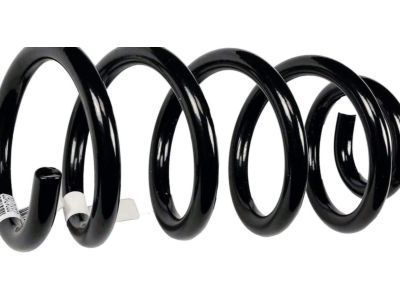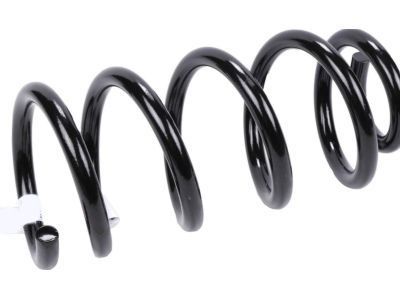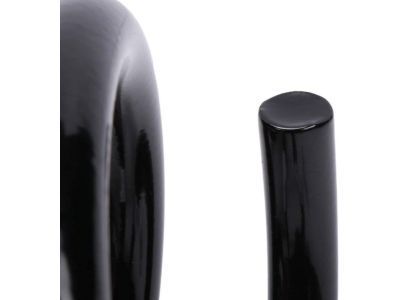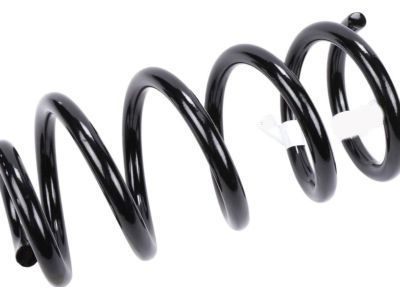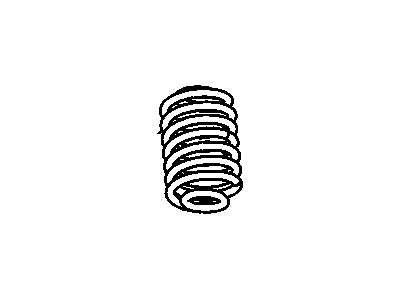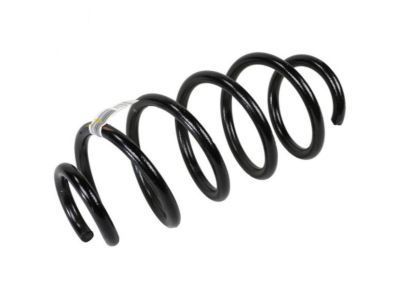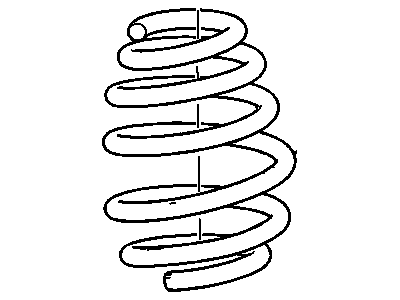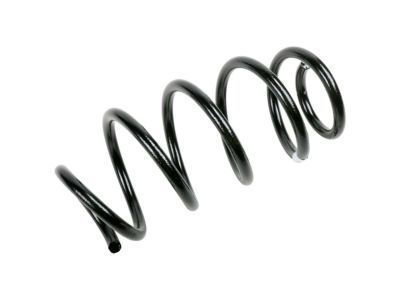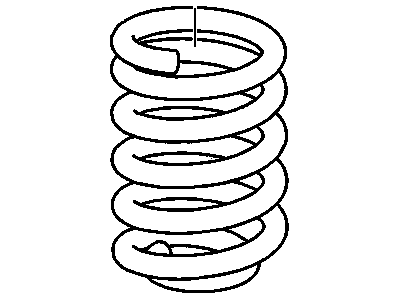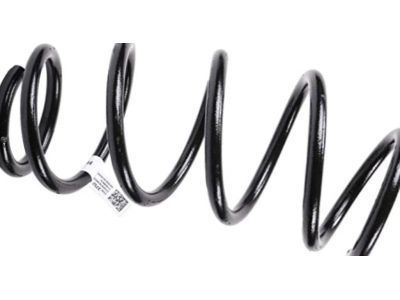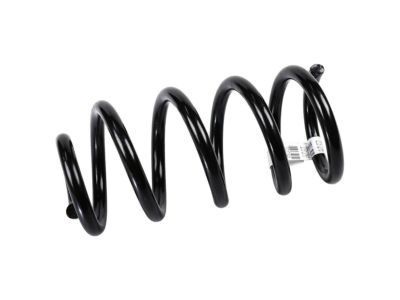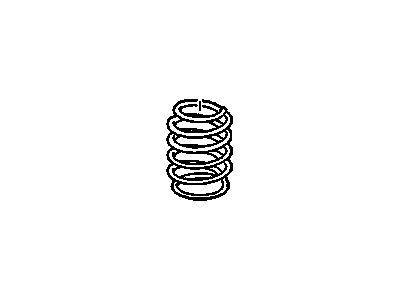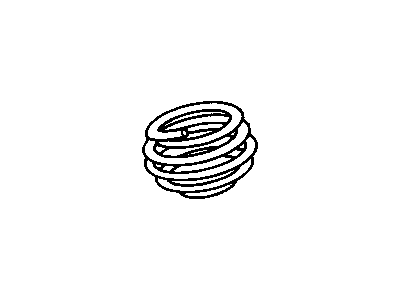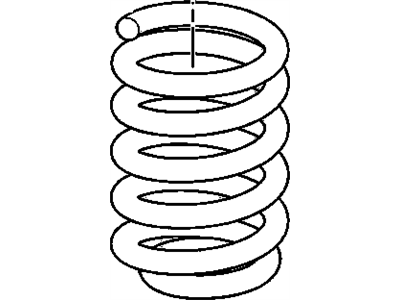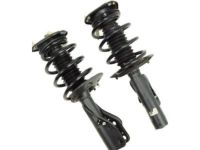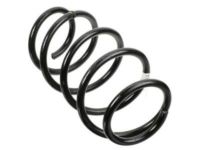
My Garage
My Account
Cart
Genuine Cadillac Coil Springs
Strut Spring- Select Vehicle by Model
- Select Vehicle by VIN
Select Vehicle by Model
orMake
Model
Year
Select Vehicle by VIN
For the most accurate results, select vehicle by your VIN (Vehicle Identification Number).
370 Coil Springs found
- Product Specifications
- Other Name: Spring, Front Coil; Coil Spring, Spring
- Position: Front
- Replaces: 23151127
Cadillac Front Coil Spring
Part Number: 23312159$50.45 MSRP: $98.33You Save: $47.88 (49%)Ships in 1-2 Business DaysProduct Specifications- Other Name: Spring, Front Coil; Coil Spring, Spring
- Position: Front
- Replaces: 23151124
Cadillac Rear Coil Spring
Part Number: 25783732$46.90 MSRP: $139.42You Save: $92.52 (67%)Ships in 1-2 Business DaysProduct Specifications- Other Name: Spring,Rear Coil; Coil Spring
- Position: Rear
- Product Specifications
- Other Name: Spring, Rear Coil; Coil Spring
- Position: Rear
- Replaces: 22904669
Cadillac Front Coil Springs
Part Number: 20907392$38.09 MSRP: $113.16You Save: $75.07 (67%)Ships in 1-2 Business DaysProduct Specifications- Other Name: Spring,Front Coil; Coil Spring, Spring
- Position: Front
- Replaces: 15871625
Cadillac Front Coil Spring
Part Number: 23107895$47.60 MSRP: $89.84You Save: $42.24 (48%)Ships in 1-2 Business DaysProduct Specifications- Other Name: Spring, Front Coil; Coil Spring, Spring
- Position: Front
- Product Specifications
- Other Name: Spring, Front; Coil Spring, Spring
- Position: Front
- Replaced by: 86537366
- Replaces: 15132801
- Product Specifications
- Other Name: Spring, Rear Coil; Coil Spring
- Position: Rear
- Replaces: 23154241, 22992609
Cadillac Front Coil Spring
Part Number: 23312165$34.82 MSRP: $103.55You Save: $68.73 (67%)Ships in 1-3 Business DaysProduct Specifications- Other Name: Spring, Front Coil; Coil Spring, Spring
- Position: Front
- Replaces: 23151130
Cadillac Front Coil Spring
Part Number: 23103752$23.39 MSRP: $44.15You Save: $20.76 (48%)Ships in 1-2 Business DaysProduct Specifications- Other Name: Spring, Front Coil; Coil Spring, Spring, Strut
- Position: Front
- Product Specifications
- Other Name: SPRING, Front Chassis; Coil Spring, Spring
- Position: Front
- Replaces: 23151126
- Product Specifications
- Other Name: Spring, Rear; Coil Spring, Spring
- Position: Rear
- Product Specifications
- Position: Front
- Replaced by: 85766022
Cadillac Spring, Front Coil
Part Number: 84475061$45.09 MSRP: $87.88You Save: $42.79 (49%)Ships in 1-2 Business DaysProduct Specifications- Other Name: Coil Spring, Spring
- Position: Front
- Replaces: 84168554
Cadillac Front Springs
Part Number: 22078113$65.60 MSRP: $90.19You Save: $24.59 (28%)Ships in 1-2 Business DaysProduct Specifications- Other Name: Spring,Front; Coil Spring, Spring
- Position: Front
Cadillac Front Coil Spring
Part Number: 23317179$47.23 MSRP: $89.11You Save: $41.88 (47%)Ships in 1-2 Business DaysProduct Specifications- Other Name: Spring, Front Coil; Coil Spring, Spring
- Position: Front
- Replaces: 23451876, 23425767
Cadillac Spring, Front Coil
Part Number: 23312163$55.77 MSRP: $100.04You Save: $44.27 (45%)Ships in 1-3 Business DaysProduct Specifications- Other Name: SPRING, Front Chassis; Coil Spring, Spring
- Position: Front
Cadillac Front Coil Spring
Part Number: 23317182$47.52 MSRP: $85.24You Save: $37.72 (45%)Ships in 1-3 Business DaysProduct Specifications- Other Name: Spring, Front Coil; Coil Spring, Spring
- Position: Front
- Replaces: 23451879, 23425770
Cadillac Front Coil Spring
Part Number: 23317184$51.65 MSRP: $92.62You Save: $40.97 (45%)Ships in 1-3 Business DaysProduct Specifications- Other Name: Spring, Front Coil; Coil Spring, Spring
- Position: Front
- Replaces: 23451881
Cadillac Front Coil Spring
Part Number: 23317178$47.47 MSRP: $85.13You Save: $37.66 (45%)Ships in 1-3 Business DaysProduct Specifications- Other Name: Spring, Front Coil; Coil Spring, Spring
- Position: Front
- Replaces: 23451875, 23425766
| Page 1 of 19 |Next >
1-20 of 370 Results
Cadillac Coil Springs
For superior quality and affordable Cadillac Coil Springs, consider our website. We proudly present a wide selection of genuine Cadillac Coil Springs at unbeatable prices. These OEM parts, supported by the manufacturer's warranty, are also eligible for our hassle-free return policy and swift delivery service.
Cadillac Coil Springs Parts Questions & Experts Answers
- Q: What is the importance of exercising caution and following instructions when removing coil springs on Cadillac DeVille?A:Removing a coil spring can be a hazardous task, so it is crucial to exercise extreme caution and adhere closely to the provided instructions to avoid any serious injuries. It is essential to utilize a reliable and top-notch spring compressor and meticulously follow the guidelines provided by the manufacturer for the tool's proper usage.
- Q: Is it advisable to replace front shock absorbers or coil springs individually, and what precautions should be taken on Cadillac CTS?A:It is possible to replace only an individual shock absorber or coil spring but the units will require disassemble by a qualified repair shop using appropriate tools. It is recommended to compare the cost of full assemblies that are rebuilt with new assemblies, with those of individual components that are replaced at a shop. Caution is advised: whenever shock absorber is being changed or a coil spring is being changed it must always be done in pairs and not a single side.
- Q: How to remove and install front Coil Springs and Shock Absorber on Cadillac DTS?A:When you park, use the handbrake, and block the rear wheels to keep the car from shifting. Unscrew the wheel nuts from your car's tires, lift the front of your vehicle, and use a jackstand to hold it steady before you detach the wheel. Make sure to keep track of how the strut connects to the steering knuckle so you can reinstall alignment properly. Unclamp the threads on two brackets, one for the brake hose and another for ABS wiring, before removing their nuts. To avoid damage, gently work each bolt off with a soft-face hammer rather than using a wrench. Take the steering knuckle away from the strut carefully, being sure not to extend the inner CV joint too much and keeping strain off the brake hose. Take off the electrical connection from the strut when available. Let an assistant hold the strut assembly while you loosen and remove its three upper mounting bolts or nuts, and then pull the whole assembly through the fender opening. Look for fluid leaks, body damage like dents, broken spots, and repairs needed on the strut before moving ahead. Examine the coil spring for damaged coating and look for imperfections in the spring seat, both major cause of failure. When you see any broken or damaged part, get a new strut straight away. Place the complete strut coil spring assembly inside the strut tower. Tighten the upper mounting nuts or bolts right away to keep the assembly from dropping. Reconnect the electrical wire to the strut when it has one. Press the steering knuckle into the strut flange front side up, put in the two bolts, use the nuts to lock them in place, line up the marks, and adjust the bolts to their specific torque. Reattach the brake hose and ABS wiring connectors to the strut with tight bolts. Put the wheel on, let the car go down, and crank the nuts to the recommended force. Put all three external screws tight to their specific force value, and arrange wheel alignment verification.
Related Cadillac Parts
Browse by Model
ATS Coil Springs Allante Coil Springs Brougham Coil Springs CT4 Coil Springs CT5 Coil Springs CT6 Coil Springs CTS Coil Springs Catera Coil Springs DTS Coil Springs Deville Coil Springs ELR Coil Springs Eldorado Coil Springs Escalade Coil Springs Fleetwood Coil Springs SRX Coil Springs STS Coil Springs Seville Coil Springs XLR Coil Springs XT4 Coil Springs XT5 Coil Springs XT6 Coil Springs XTS Coil Springs
